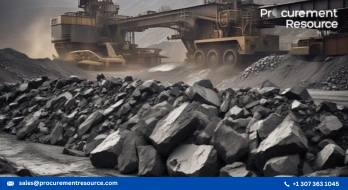A Mixed Near-Term Outlook Resulted In Price Fluctuation Of Iron Ore At The Dalian And Singapore Exchange

Prices Of Iron Ore Branch Due To Mixed Market Outlook
The Dalian and Singapore iron ore Futures displayed a miscellaneous trend because of a diverse near-term market outlook, with the previous one following a downward trend for the fifth time in a row, while the latter rebounded.
The most-traded May iron ore futures agreement on the Dalian Commodity Exchange (DCE) completed daylight trading 0.78 percent lower at 888.5 yuan (USD 127.98) a tonne.
Request Access For Regular Price Update of Iron Ore
The regional market stayed cautious of the effect of restrictions on production in Tangshan, the most prominent steel production hub in China. In the upcoming two sessions, production curbs are unlikely to lower, as per a senior iron ore analyst, Yu Chen, at consultancy Mysteel, directing to China's yearly parliament meeting that begins on March 5.
The optimism surrounding the reopening of China supported the upliftment of iron ore prices to a seven-month high in January prior to fading cheer caused a pullback in early February. Hopes for boosting the economy in China through 2023 persist, even though the market is reviewing the grounds on which it will be made. The primary threat to iron ore demand is the weakening steel sector in China, which is pulling down the property market exacerbates.
It is expected that steel output in China will increase gradually over the near term, though it is predicted to be a lower full-year production and iron ore imports. An occasional squeeze in supply backs upgrades to prices of iron ore forecasts for the initial half of 2023 in spite of the expectations that ex-China demand continues to be subdued.
In the meantime, the Singapore Exchange benchmark for March iron ore traded at $123.8 a tonne, up by 0.87 percent as of 0700 GMT.
The fundamentals (Iron ore) are cooperative at the moment since the daily hot metal output followed an uptick, according to an international brokerage firm's Shanghai-based senior analyst from FIS, Pei Hao.
Occasionally, the SGX futures prices better reflect the fundamentals.
According to analysts at Huatai Futures, the supply stayed fairly restricted, and demand will be aided by the uptick in downstream steel demand, cautioning the potential increasing volatility in pricing originating from policy uncertainties.
As per the statement by Brazilian miner Vale SA, its high-grade iron ore production of agglomerates is anticipated to grow in the approaching years as it witnesses the average premium for higher quality rising in a straining market.
The other ingredients used in steel-making slumped after gaining ground a day before from anticipations of lower supply following improved security checks at coal mines.
Coking coal fell by 2.64 percent, while coke dropped by 1.76 percent.
Prices of steel persisted in following a downward trajectory amidst the bearish price of raw material.
On the Shanghai Futures Exchange, Rebar dropped to 4,174 yuan a tonne by 0.64 percent, hot-rolled coil fell by 0.54 percent, wire rod slipped by 1.59 percent, and stainless steel dipped by 0.66 percent.
There is an additional dismay for the near-term iron ore demand outlook in Europe and Japan, where extra spikes in interest rates to combat inflation are anticipated to put pressure on financial growth in the first half. The manufacturing purchasing managers' indexes for both economies stayed hostile in January in spite of indications of progress in Europe on increasing auto sales.
Read More About Iron Ore Production Cost Reports - REQUEST FREE SAMPLE COPY IN PDF
December witnessed monthly steel production in Japan and Europe dip to their lowest levels since the pandemic struck during 2020. It is anticipated that there will be a 1.2 percent year-over-year rise in total iron ore imports to Japan and Europe in 2023 on the basis of a muted steel output recovery.
As per the article by Procurement Resource, the Dalian and Singapore iron ore futures witnessed a fluctuating trend owing to the uncertainty in the market outlook; although the reopening of China provided upward pressure on iron prices, the region's weakening steel sector, coupled with production restrictions in Tangshan (the largest steel production hub in China), weighed down the market sentiment. Furthermore, the European and Japanese short-term iron ore demand is likely to remain sluggish with the anticipated hike in interest rates to curb inflation.



.webp)